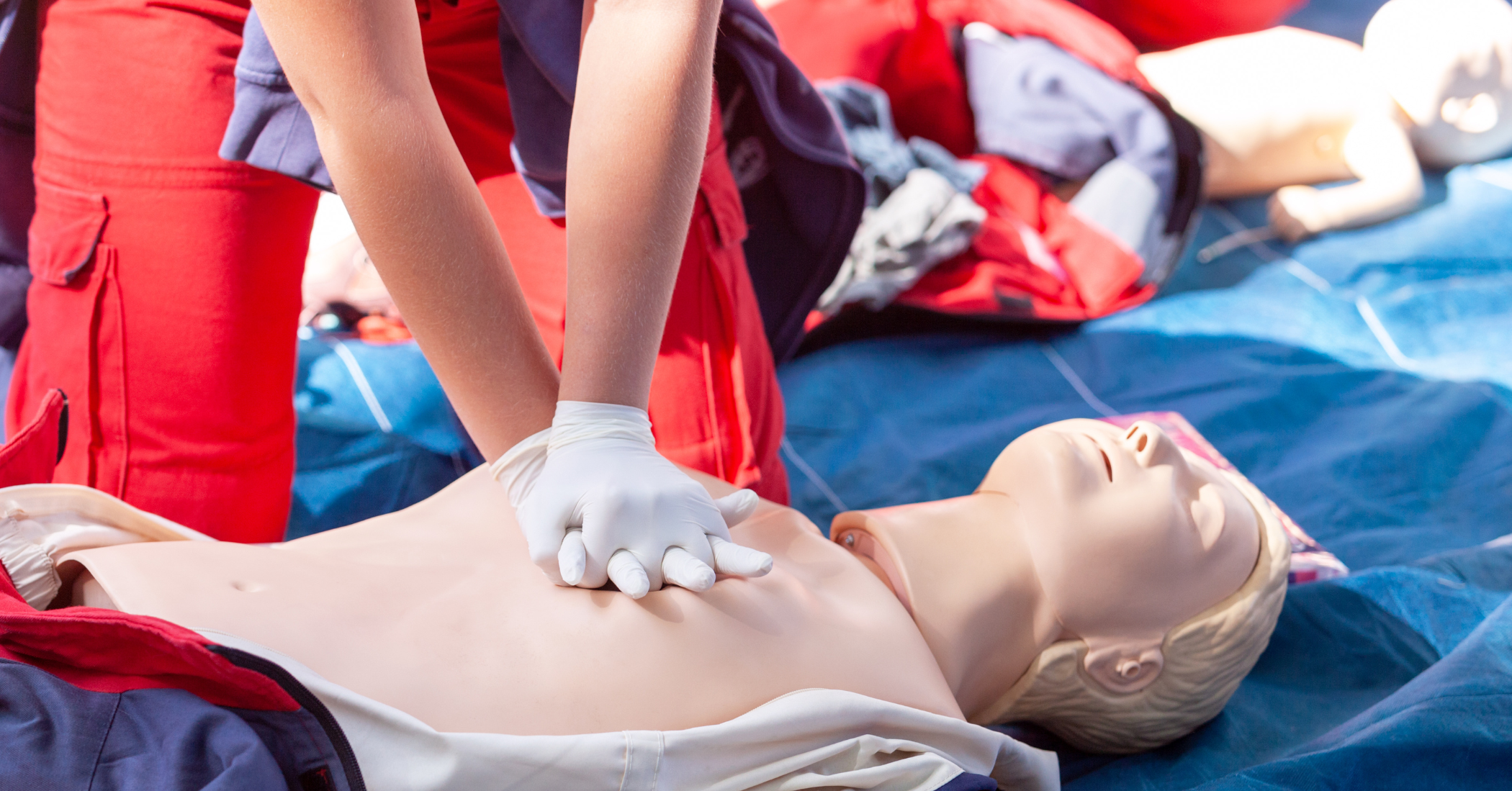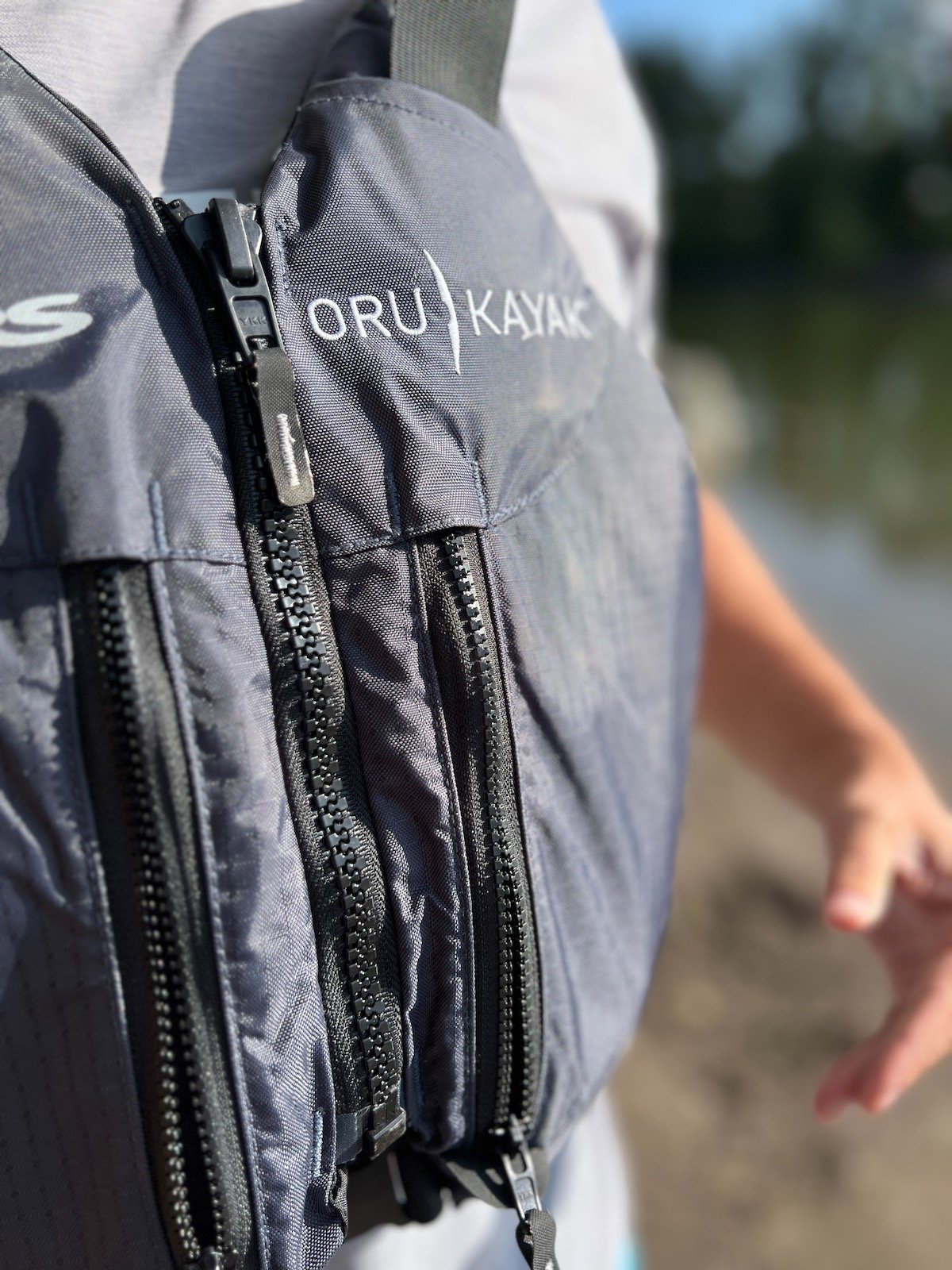Top reasons kayakers should get CPR and First Aid Certified
Safety should never take a backseat in your kayaking adventures. Even for flat water paddling fans, where the waters explore are often calm with light currents, we must also be prepared for unexpected emergencies that can happen in our outdoor environments.
I renewed my American Red Cross Adult and Pediatric CPR/AED/First Aid Certification this past weekend. The content refresher, hands-on manekin demos, skills training, and group role play was SO helpful, I thought I’d pull together some key insights and resources for Flatwater Kayak Club.
In this article, we'll explore the importance of obtaining CPR and First Aid certification to support your kayaking adventures. These training programs provide critical skills that can literally make the difference between life and death in emergency situations.
So let’s explore why CPR and First Aid training can help you paddle (and explore our world’s wild places) with greater confidence, safety, and peace of mind…
Just a heads-up, this post may contain affiliate links that at no additional cost to you, we may earn a small commission.
Why get certified in First Aid, AED (Automated External Defibrillator), and CPR (Cardiopulmonary Resuscitation)?
Obtaining first aid training is crucial for your safety and the well-being of those around you. In emergencies, the ability to administer immediate aid can be the difference between life and death.
First aid training equips you with the knowledge and skills to respond effectively to injuries, medical crises, and accidents. It empowers you to provide critical care, including CPR and AED use, until professional help arrives.
By getting first aid training, you become a valuable asset in emergencies, whether at home, work, or during outdoor activities, and you contribute to a safer and more prepared community. [Learn about first aid kit essentials for kayakers].
Here are 5 key reasons kayakers should receive qualified, accredited First Aid and CPR training:
Be ready for anything on your flatwater adventures
When we're out on the tranquil flat water, we know that accidents and medical emergencies can happen unexpectedly. Weather turns. Water changes. Seasons shift. That's why it's essential for beginner and intermediate kayakers like us to consider getting certified in First Aid, AED, and CPR – and I’d argue for expert kayakers as well.
Understanding how to identify shock symptoms, dress a wound, support a distressed person with receiving care or treating their allergies, or even perform CPR on an unresponsive adult are essential skills not only enhance our kayaking experience but also ensure we're well-prepared for any situation that might arise – near or away from water.
(And hey, I’m allergic to bees and carry an Epipen with me in my dry bag, and I learned a lot of new thing about anaphylaxis and helping a person having an allergic reaction).
2. Boost your safety awareness while flatwater kayaking
It's not just about learning the skills – it's also about raising our overall safety awareness while flatwater kayaking. Certification in these life-saving techniques makes us more vigilant about potential risks in our outdoor environments.
Of course, depending on whether you’re on your kayak or on land, different care may be needed, but The American Red Cross program emphasizes safety protocols, situational awareness, and accident prevention, making us better at assessing risks and making informed decisions to prevent emergencies.
While the Red Cross offers online classes, and hybrid course formats, I do recommend taking an in-person class for the best experience. The hands-on demos really do matter, and the adult and pediatric mannequins seem very lifelike when performing CPR.
3. Strengthen group safety for kayaking enthusiasts
As a community of kayakers, our safety is a collective responsibility. When everyone in our group has these skills, it creates a safer environment for everyone who enjoys being out in nature. We'll be better prepared to handle emergencies together, no matter the situations we encounter.
Seconds count in emergencies: In cases like cardiac arrest or drowning incidents while flatwater kayaking, time is of the essence. Knowing how to administer CPR or use an AED can literally save lives during paddling excursions. The American Red Cross program places a strong emphasis on quick response, teaching us how to perform chest compressions, operate an AED, and provide critical care until professional help arrives. By getting certified, we become potential lifesavers on the water.
Look out for each other: As the founder of the Flatwater Kayak Club, I believe we have a responsibility to look out for our fellow paddlers. By obtaining First Aid, AED, and CPR certifications through the American Red Cross, we not only show our commitment to safety but also set a positive example for others. It's a leadership quality that inspires trust and confidence among our kayaking community, especially for beginners and intermediate paddlers who look up to us for guidance
Being ready for emergencies, increasing our safety awareness, and enhancing group safety are just a few of the benefits that come with these certifications. Remember, quick response can save lives, and together, we can prioritize safety on the water. Let's make our kayaking excursions not only thrilling and fun, but safe and secure for paddlers of all skill levels.
Check out American Red Cross certification programs and events near you.
Additional kayak safety training courses
While CPR, First Aid, and AED certifications is the foundation for safety training, they should be part of a broader commitment to kayak safety.
One crucial aspect often overlooked, especially in flatwater kayaking environment where all may appear calm and safe, is wearing a life jacket. No matter how flat and peaceful the waters may appear, make your PFD a non-negotiable part of your kayaking gear, just like your kayak and paddle (plus, in some states, it’s the law). This is the number one way to prevent drowning while kayaking, boating, swimming, or any other activity that involves water.
If you're eager to enhance your safety knowledge and wilderness skills further, consider enrolling in specialized training programs offered by reputable companies. These programs provide comprehensive training that goes beyond basic certifications and can be invaluable for wilderness aficionados.
Two noteworthy examples are:
NOLS (National Outdoor Leadership School): NOLS offers a variety of wilderness safety courses tailored for kayakers and outdoor enthusiasts. Their programs cover topics such as risk management, navigation, wilderness medicine, and leadership skills, providing a holistic approach to outdoor safety.
REI Outdoor School: REI offers a range of outdoor education programs, including kayaking and wilderness safety courses. These REI classes are designed to teach you essential skills for enjoying outdoor activities safely, from kayaking techniques to wilderness first aid.
Local paddle shops kayaking classes: Check out Kayaking 101, Kayaking for Kids, Essential Kayaking Skills, Kayaking Rolling Classes, and more, frequently offered by locally owned and operated paddling businesses. You can also sign up for private classes to take your skills and safety confidence to the next level.
By investing in your paddling skills, safety training, and always wearing your life jacket, you'll be taking significant steps towards becoming a well-prepared, responsible, and safe flatwater kayaker.
Remember: A combination of knowledge, skills, and the right gear is the key to enjoying your kayaking adventures to the fullest while ensuring your safety and that of your fellow paddlers.
Guided tours with ACA Certified Instructors:
For those seeking an immersive and safety-focused kayaking experience, consider joining guided tours led by instructors certified by the American Canoe Association (ACA). These professionals not only possess CPR, First Aid, and AED certifications (a requirement for ACA certification), but also have comprehensive training in kayaking instruction and guest safety.
When you paddle under the guidance of ACA certified instructors, you gain access to a wealth of knowledge and expertise that enhances your kayaking journey. This is most especially helpful for beginning and intermediate kayakers, or if you’re traveling to an unknown region where a guided expert will provide a better, safer kayaking trip.
ACA Instructors, Instructor Trainers, and Instructor Trainer Educators are required to maintain appropriate First Aid and age appropriate CPR training from a nationally recognized First Aid and CPR provider throughout the term of their ACA certification. First Aid and CPR courses must include hands on practice and skills demonstration.
ACA-certified instructors emphasize the importance of proper gear, risk assessment, and group communication. They’re also well-versed in emergency response procedures, ensuring that you're in capable hands should unexpected situations arise (and hello, satellite phones).
Whether you're a beginner looking to build a strong foundation or an intermediate kayaker seeking to refine your skills, these guided tours offer a safe and educational environment to enjoy your paddling adventures to the fullest.
Some of the guided kayak experiences I’ve enjoyed with ACA-Certified instructors in the Pacific Northwest include:
Mt. St. Helens kayaking tour with REI (Coldwater Lake, Washington)
Willamette Narrows kayak experience with REI (Portland, Oregon)
Whitewater kayaking beginner pool class with eNRG kayaking (Oregon City, Oregon)
Columbia River Gorge sunset kayaking tour (near Hood River, Oregon)
Conclusion
Certifying yourself and encouraging your fellow flatwater kayakers to obtain First Aid, AED, and CPR certifications through the American Red Cross program is a proactive step toward ensuring the safety and well-being of your club members.
Being prepared for emergencies, increasing safety awareness, and enhancing group safety are just a few of the benefits that come with these certifications. Remember, a quick, informed response can save lives, and as a leader in your kayaking community, your commitment to safety sets a powerful example for others to follow. Make the pledge to prioritize safety on the water by getting certified today!
Check out American Red Cross certification programs and events near you.








![RV, paddle & play at Blackwell Island RV Park, Coeur d’Alene, Idaho [REVIEW]](https://images.squarespace-cdn.com/content/v1/62c5c6be9225615a8d0231a9/8b7d2def-ed4b-4ee2-aaf7-9622e7cc19e8/Blackwell-Island-Idaho-CoeurDalene-KayakRentals.jpeg)
![Are Ombraz armless sunglasses worth the hype? [REVIEW]](https://images.squarespace-cdn.com/content/v1/62c5c6be9225615a8d0231a9/a5eb2fe8-d50d-4afc-bda9-a5a5bb3031c8/ombraz-sunglasses-flatwaterkayakclub-review.jpeg)
Check out photos of a charming houseboat cabin rental in Oregon for your next kayaking adventure.